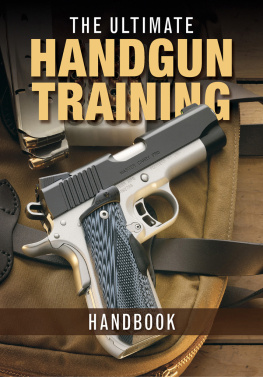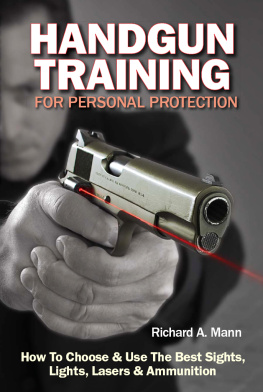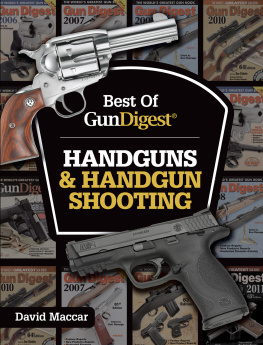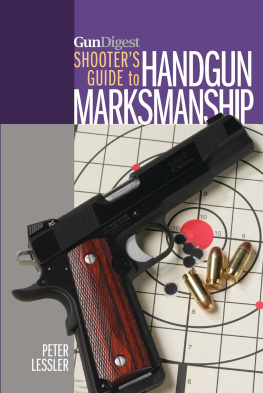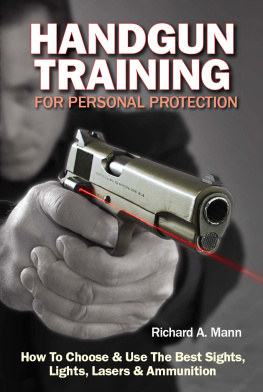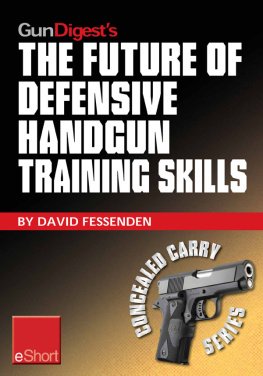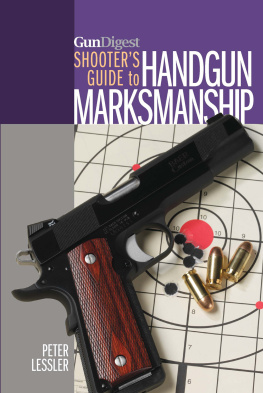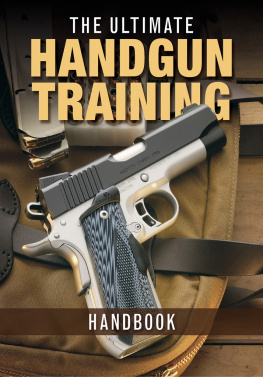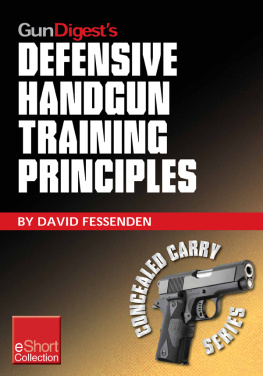Thank you for purchasing this Gun Digest eBook.
Sign up for our newsletter and receive special offers, access to free content, and information on the latest new releases and must-have firearms resources! Plus, receive a coupon code to use on your first purchase from GunDigestStore.com for signing up.
or visit us online to sign up at
http://gundigest.com/ebook-promo
Contents
Chapter 1
Gun Safety
No book on firearms training that deals with gun handling and marksmanship would be complete without a thorough, up-front discussion of gun safety.
Safety, more especially gun safety, is a major concern for those shooters on and around any gun range when firearms are present. A professional, focused demeanor must be exhibited by all shooters at all times. Any reckless, careless, unsafe and unprofessional gun handling or behavior will never be tolerated or condoned by any observers or fellow shooters. This type of behavior will only demonstrate to all of those in your presence your level of incompetence and your total disrespect for their general safety and welfare. Contrary to this disrespect and reckless disregard for safety, a focused and concerned gun owner must always exhibit proper and correct safety standards whether on the range or alone in the field engaged in recreational shooting.
Remember, always handle your firearms in a safe and responsible manner and keep your head in the game! Further, the Four Universal Rules of Firearms Safety are in effect 24/7 wherever and whenever a firearm is present. Lets start by discussing the importance of the Four Universal Rules of Firearms Safety.
The Four Universal Rules of Firearms Safety
These rules are attributed to Col. Cooper before he became a major influence in the handgun training field; there were, and still are, those who espoused dozens of such rules. Most of these rules were simply reiterations of the others. Recently I saw a modem firearms training video in which the instructor proposed that there were 16 rules of firearms safety. The vast majority of them were silly and insulted the viewers intelligence. Anyone with a half a room-temperature IQ could have routinely figured out that breaking a couple of them, while on the range, would not put them in any great peril. Cooper culled out all these nonsensical rules and relegated them to the trash heap. Breaking any one of the remaning rules while shooting or training with your firearm, however, might result in death or injury to the shooter and/or his fellow range companions.
Col. Cooper subsequently modified and distilled this hodgepodge of useless and repetitive rules into his Four Universal Rules of Firearms Safety. Any instructor worth his reputation should faithfully promote them on his range or in his classes. I teach them with much passion and ask my students to recite them verbatim in front of their fellow students each day until they are all able to exhibit that they have them firmly committed to memory.
Stephan P. Wenger, in his book Defensive Use of Firearms, has added a fifth rule, which states maintain control of your gun. My feeling is that this line of reasoning is more pertinent to gun ownership and storage than to range safety. It relates to the legal problems that can accrue from having your firearm fall into the wrong hands and end up being used in the commission of a felony offense like armed robbery, murder or the wrongful death of a minor. In many states, you can be charged as an accessory to that crime, the thought being that through your negligence, you facilitated the commission of the crime. Wengers fifth rule makes a lot of sense and all gun owners should be mindful of its implications. However, I choose not to include it as part of the original four rules. It goes without saying that proper and lawful gun storage of firearms by all gun owners is of the utmost importance at all times.
RULE 1: Treat all weapons as if they are loaded.
Many gun pundits reverse these sentiments when reciting the Four Universal Rules of Firearms Safety and say All weapons are always loaded! To me, there is a very obvious distinction here and it may be parsing words, but all weapons are not always loaded. A popular talk show host has a saying that I utilize in my class lectures and writings: Words have meaning and actions have consequences! Think about that for a while, please.
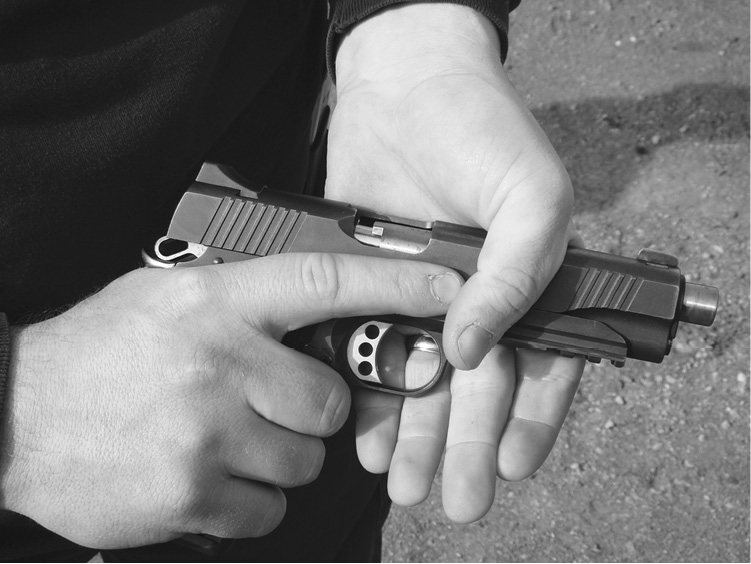
Is this weapon loaded or unloaded? Its impossible to tell without checking the chamber. Thus the rule: Treat all weapons as if they are loaded!
When you are cleaning your weapon and have chamber-checked it several times and it is now field-stripped and lying on your bench, is it loaded? Of course not. When you have decided that you need to send your weapon off to a gunsmith for a certain repair job and you have chamber checked it several times, removed the magazine and partially disassembled it, is it loaded? No.
My point is that a broad-brush statement such as all weapons are always loaded simply does not ring true 100% of the time. For example, is a gun in a holster always loaded? True, we must always treat them as if they are loaded, and before putting them into our holsters or placing them in a gun safe or handing them to a fellow student, we need to conduct a chamber check or two. Remember, chamber checking is two seconds of cheap insurance!
RULE 2: Do not point the muzzle at anything you are not willing to destroy.
This is quintessential Cooper and refers to muzzle awareness. The muzzle of your gun is the opening at the end of the barrel out of which the bullet exits when the weapon is fired. Waving your weapon around irresponsibly on the range or in a crowd of fellow shooters on the range is highly unsafe and very disrespectful toward the safety of those around you. You could be covering them with the muzzle. By covering them, I am referring to the physical act of tracking or crossing your friends body parts with the muzzle of the gun. It does not have to come in physical contact with them.
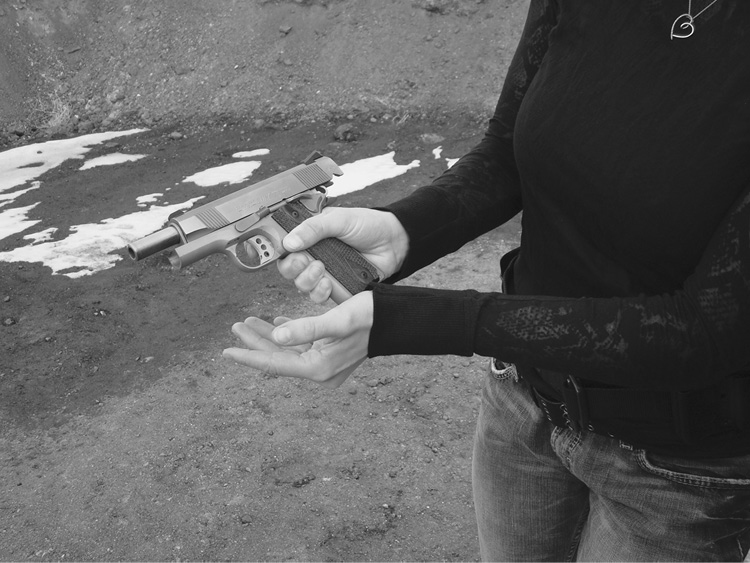
Keep that muzzle clear of all body parts including your own!
Who is the biggest culprit when it comes to muzzling someone? You are. In many of your gun handling drills, you will accidentally cover yourself dozens of times. While re-holstering, a new student sometimes places his support-side hand on his holster, to steady it and draw the weapon across his exposed hand. If this were a loaded firearm and you suddenly became muzzle-aware, you would immediately feel the need to never place your hand there again. The safest place for your muzzle to be pointed is always downrange while performing any of the gun handling drills. If that is not an option, then point it toward the ground, finger off the trigger. It should never be pointed anywhere near a fellow student or instructor.
Speaking as an instructor who has had dozens of guns pointed at him on the range, I get very grumpy whenever it occurs! In my defensive handgun classes, we demonstrate how this can happen (with our index finger gun) and how to become hyper-muzzle conscious.

